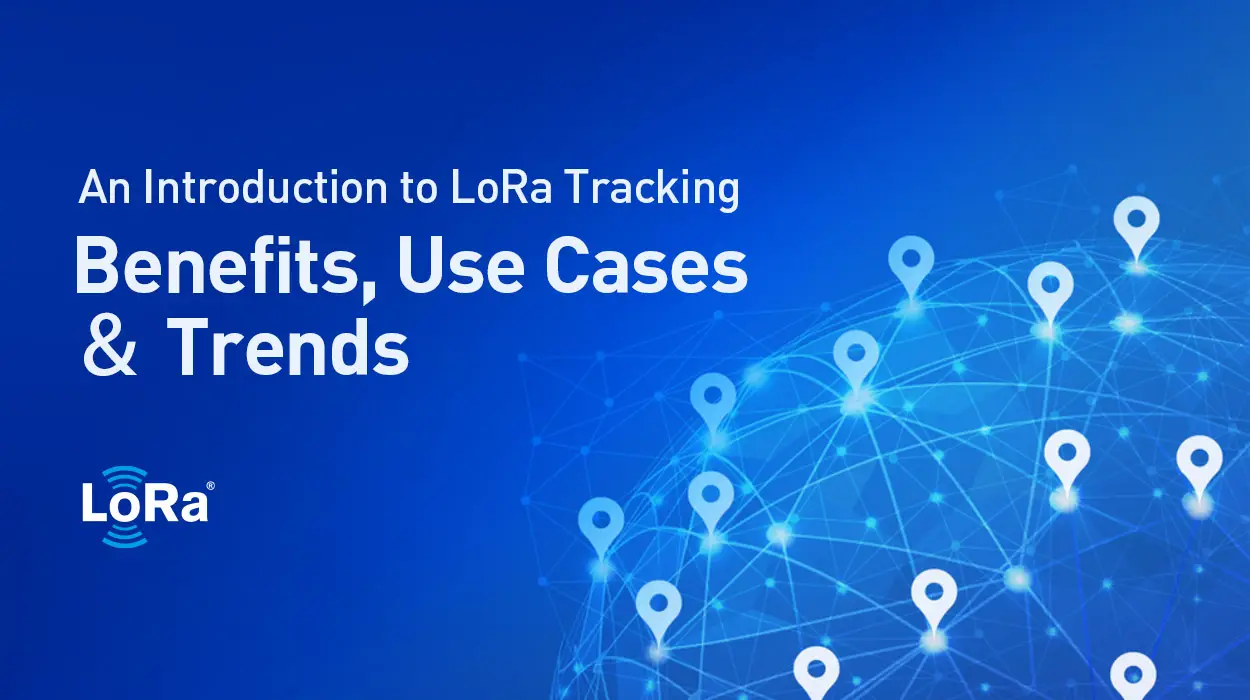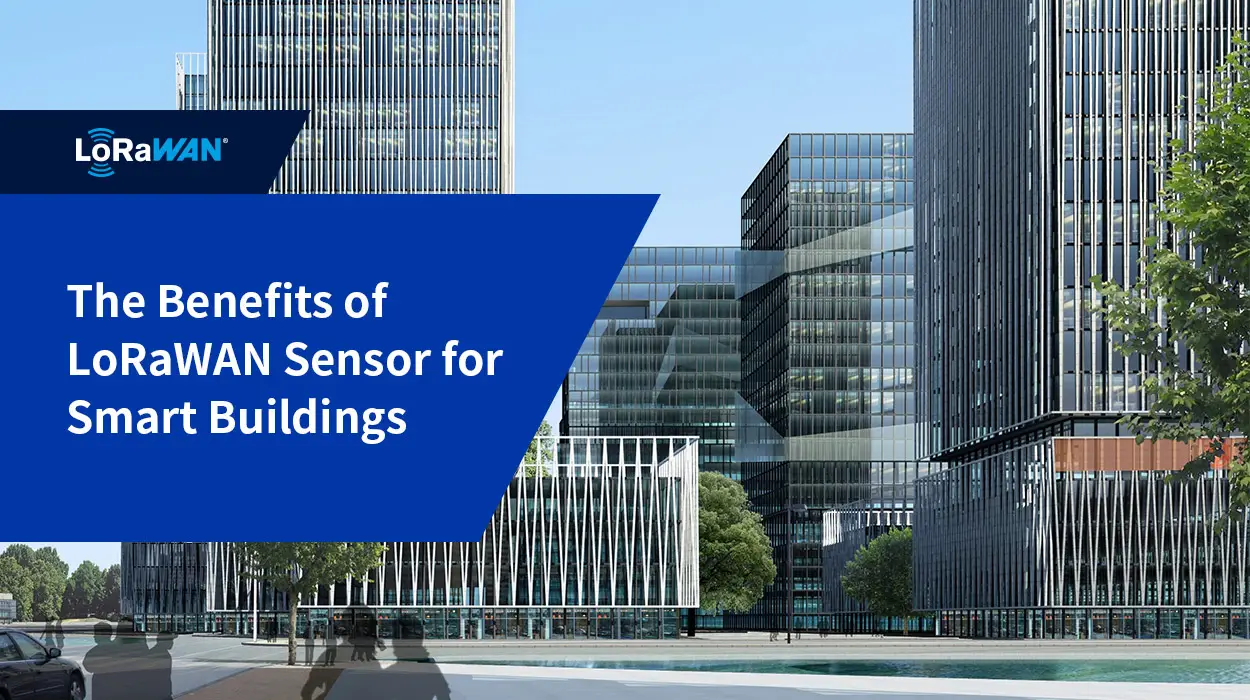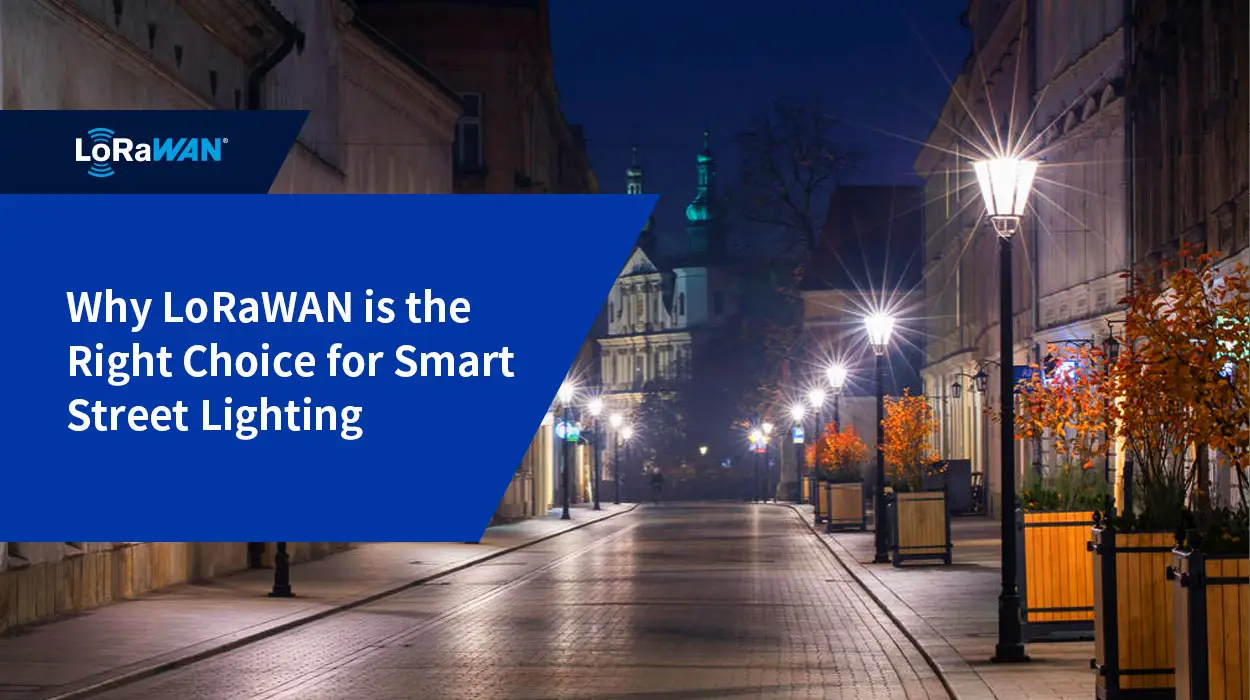When IoT first appeared on the technology stage, there was a degree of uncertainty about its use cases across industries. And a few decades later, we see IoT sweeping almost every industry. Today, a prominent use case for IoT solutions is IoT-based location tracking, which has drawn widespread attention across multiple industries. Location and tracking technologies face challenges in IoT applications when large areas are involved. In order to achieve better communication, LPWAN protocols provide different solutions, of which the LoRa tracking scheme is very popular. In this article, we will cover everything there is to know about LoRa tracking, starting with its definition.
What is LoRa Tracking
LoRa tracking refers to the use of LoRa technology and the LoRaWAN standard to track and manage assets, machines, pets, and even humans. As a narrowband wireless communication technology, LoRa has begun to show its edge in tracking and positioning in recent years. Unlike traditional tracking solutions, LoRa-enabled tracking solutions offer significant advantages in long distance, low power consumption, and low cost, which is exactly what the market demands.
The global low power geolocation market is expected to reach $100.43 billion by 2027 with a CAGR of 25.4% from 2021 to 2027, according to Research and Market Reports. With location-aware service becoming an important part of IoT devices, LoRa tracking provides a new solution for applications based on different business needs. In 2020, Semtech launched the LoRa Edge geolocation platform, which supports the automatic positioning of the ultra-low power asset management platform, and tracks and monitors assets such as equipment, products, vehicles, and personnel, thereby ensuring the stable operation of the supply chain and achieving more intelligent and more actionable tracking service.
What are the benefits of LoRa Tracking
The rapid technological breakthrough has led to the continuous development of LoRa technology in the past years. Due to the prominent advantages of LoRa technology, there are many benefits that you can expect from implementing a smart LoRaWAN tracking solution. Here are some of the key benefits of deploying LoRa-enabled tracking solutions.
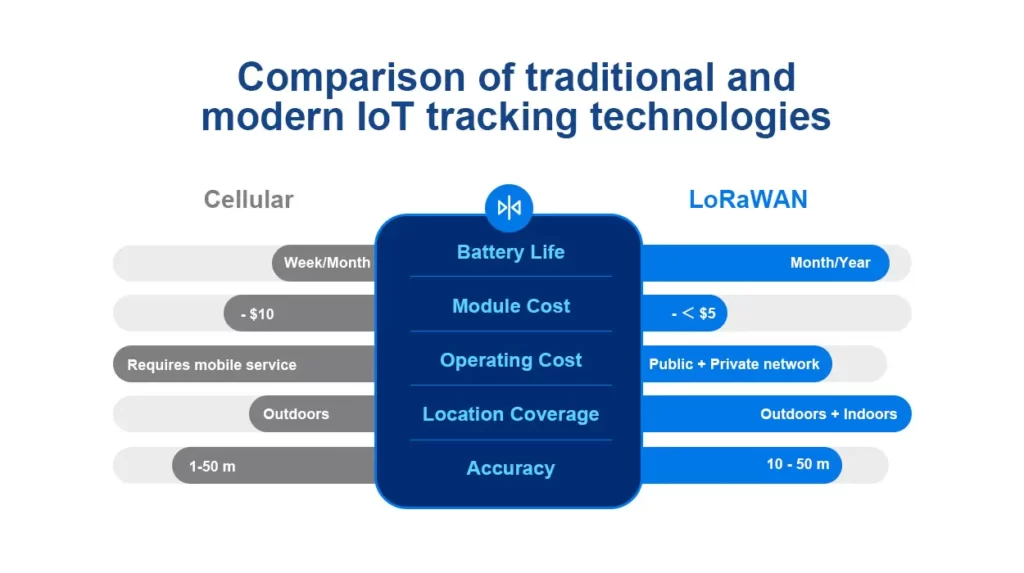
Long range: One of the primary benefits of adopting a LoRa location tracking solution is that LoRa supports long range communication between end devices and gateways, which makes it possible to track the target object over a large area.
Public and private deployment options: The LoRa-based tracking solution is flexible in networking, supports both public and private networks. And the solution can be customized according to the specific needs of customers to achieve continuous indoor and outdoor coverage.
Geolocation: The low-cost geolocation capability is based on the TDOA (Time Difference Of Arrival) rather than traditional RSSI, which enhances the accuracy of LoRa tracking. With no additional infrastructure, any LoRaWAN-enabled sensor node or terminal device can be easily deployed.
Cost-effective: The cost of LoRa devices is relatively low, and the advantages of LoRa’s long range can reduce the use of gateways required, thereby reducing overall deployment and operation and maintenance costs for tracking solutions.
Common use cases of LoRa tracking solutions
Among the many IoT applications, geolocation tracking is one of the strongest and fastest growing segments. In recent years, LoRa technology has made continuous efforts in the field of positioning and tracking, integrating location and environmental sensors with IoT devices, and many application cases have emerged around the world. Come, let us take a look at some of the common use cases of LoRa tracking solutions.
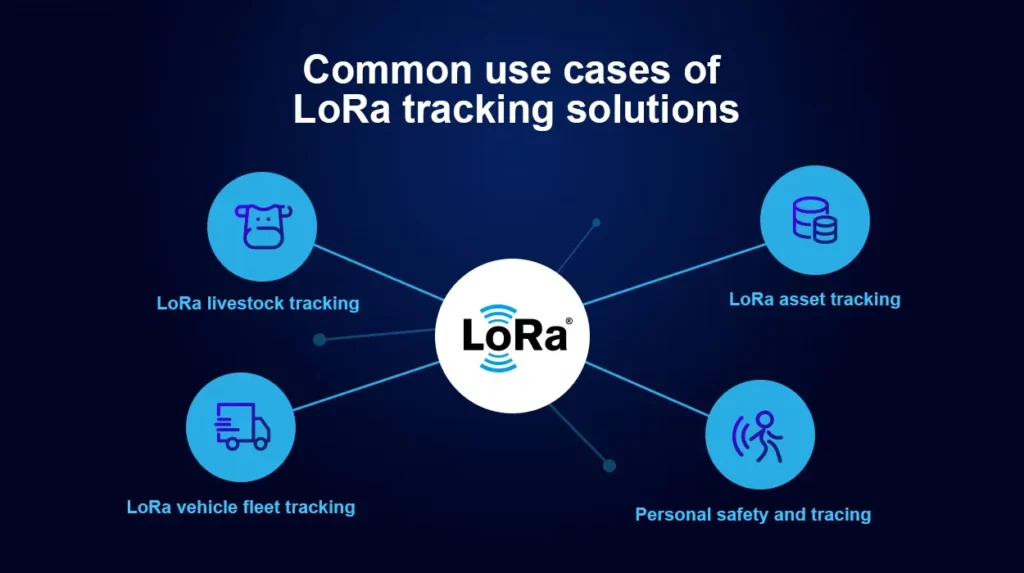
LoRa livestock tracking
The development of smart farming is faced with the challenges of large number and wide distribution of livestock herds, and the demand for animal husbandry for cattle and sheep positioning and tracking is increasing. The smart livestock tracking solution comes with big help for farmers to monitor and manage their cattle and sheep. Only one LoRa animal tracker can realize the functions of location and LoRa data transmission, which provides more possibilities for improving livestock management.
LoRa asset tracking
LoRa-based asset tracking solution are widely adopted by enterprises, institutions, and government agencies to help track dynamic information on their assets. Compared with traditional manual management, the real-time tracking monitoring that supports LoRa greatly improves management efficiency. Smart devices with tracking and positioning functions can query the location, stock location, stationary or moving information of assets, and provide protection against loss and damage of assets.
LoRa vehicle fleet tracking
In smart supply chain and logistics, businesses are enabled to access the necessary data to make informed cost-saving decisions by leveraging the LoRa fleet tracking solution. The smart sensors will periodically transmit the geolocation data of the fleet, giving the user the ability to monitor the status of vehicles and transported cargo and ensure that they arrive at the intended destination on time. This is an ideal solution when it comes to transporting temperature-sensitive products over long distances.
Personal safety and tracing
The LoRa-based contact tracing solution is very suitable for enclosed areas such as shopping centers, hospitals, and campuses to achieve tracking and management of people. Meanwhile, smart worker tracking solution are widely adopted in hazardous construction sites such as tunnel building. The smart LoRaWAN tracking solutions provide users with a wealth of data that can be used to ensure personal safety and keep proper social distance.
What to consider when selecting a LoRa tracking solution
Before starting searching for a reliable LoRa tracking solution, you should evaluate your business needs and consider your goals. It’s also essential to consider some aspects of the LoRaWAN tracking solution before picking a proper one. What are the main factors one should take into account while developing a LoRa location tracking solution. Let us find out:
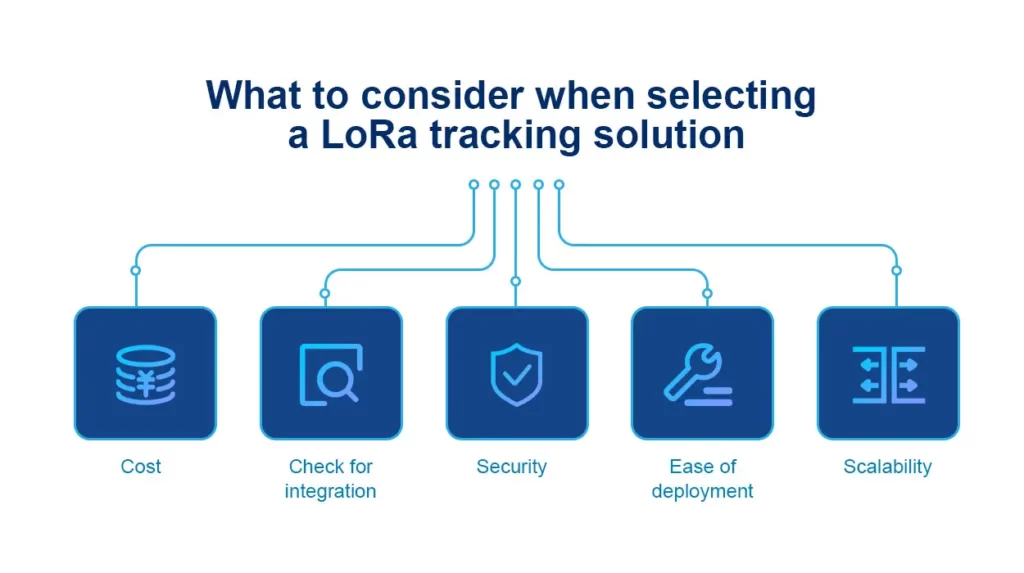
Cost
The cost always needs to be given priority. It is important to note, however, that some solutions are more expensive in the short term and more cost-effective in the long term. Therefore, a balance of considerations is needed to select the most cost-effective option.
Check for integration
This is in regard to the variety of sensors, gateways and the cloud platform. Consider whether the smart devices can integrate well with the existing systems without any incompatibilities. With better integration, it could be easier for your business to get started with your smart tracking solution.
Security
Security is a key consideration when choosing an appropriate LoRa tracking solution. With the constant exchange of large amounts of data between smart devices, it’s vital to maintain their integrity and security. Any data breach can cause damage to your business, so make sure that the solution you choose offers robust security features.
Ease of deployment
Another important factor to consider is whether the smart tracking solution you choose is easy to deploy. User experience is of great significance at all times, and if the solution is difficult to deploy, chances are that the employees may avoid using it or give it up altogether. Choose a solution that is user-friendly and easy to set up and use.
Scalability
Some tracking solutions are designed for small businesses, while others can be used for large businesses. It’s vital to access your business needs and take into account the growth of your business in the long run, so as to choose a proper solution that can be scaled along with your business.
Trends of integrating LoRa tracking and other technologies
As the market for tracking and location has grown, there have been two distinct trends in recent years. First, location-based technologies and industries are shifting to provide ubiquitous location services for indoor conditions, and location services that integrate indoor and outdoor environments are also emerging. Second, the requirements for positioning accuracy are constantly improving, even reaching the centimeter level.
At present, technical solutions that can provide high-precision positioning solutions on the market include UWB, Bluetooth, Wi-Fi, etc., and LoRa Edge provides medium-precision solutions. The positioning accuracy of the first three can reach centimeter level, while the latter is mainly aimed at the positioning range of 10-50 m. In specific projects, pretty much solutions tend to adopt the integration of LoRa and other technologies. Multi-technology integration schemes may be more in line with the market demand in the future.
| Solution | Capability | How to work |
|---|---|---|
| LoRa + GPS | Outdoor high-precision positioning and tracking | The terminal is composed of a GPS module and a LoRa node. It collects its own positioning information and wirelessly transmits it to the gateway through LoRa for data collection. The gateway then uploads the information to the cloud via 4G/Ethernet. |
| LoRa + UWB | Indoor high-precision positioning and tracking | By utilizing the diffraction performance of the LoRa technology, the beacon terminal at the physical layer reports data to the gateway through the LoRa technology, and the gateway uploads the data to the data management layer through 3G/4G for analysis and processing, and finally manages and presents the data through various application terminals. |
| LoRa + Bluetooth | Indoor high-precision positioning and tracking | Bluetooth beacons without power supply are deployed on a large scale indoors to transmit the location information of the beacons at a certain time interval. The positioning tag detects the location of the beacon through Bluetooth, and transmits the location information of the surrounding Bluetooth beacons to the cloud server through the LoRa gateway after receiving the information. In indoor positioning, fewer LoRaWAN Bluetooth gateways are required to cover a wider distance, which greatly reduces the deployment cost. |
Deploy your LoRa tracking solution with MOKOLoRa
Focusing on the LoRa IoT business, MOKOLoRa specializes in providing a variety of LoRa solutions to satisfy the diverse needs of our customers. As the demand for LoRa tracking solutions continues to grow, we play an important role in transforming the way businesses leverage the smart tracking solution. Our LoRaWAN GPS tracker is ideally suited for a variety of applications and can be customized to the specific needs of our customers. If you have any needs, please contact our LoRa expert!

